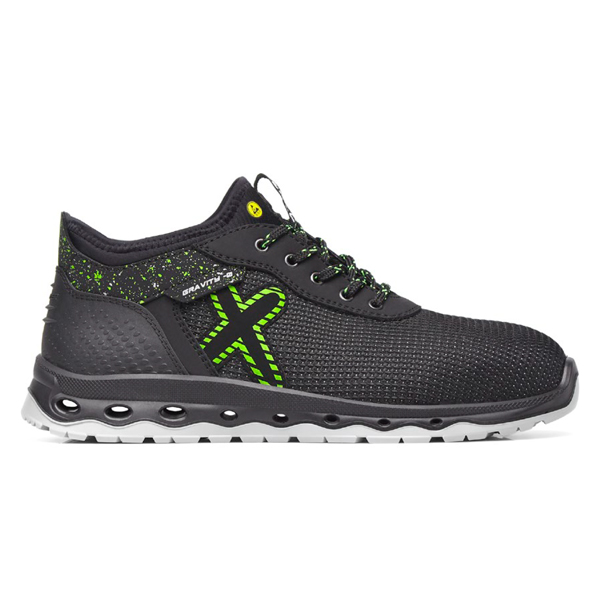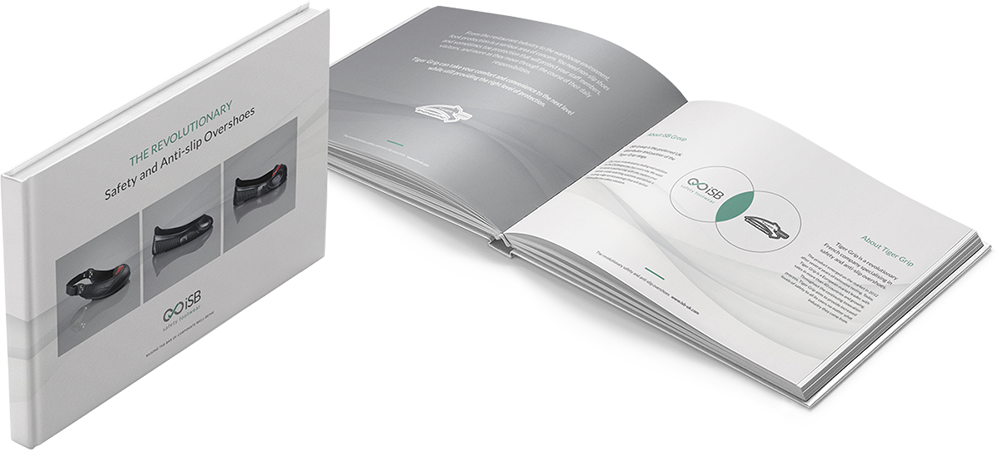
We’ve talked time and again about how important it is to wear good quality, properly fitting safety footwear, but what exactly is safety footwear, and what do you need to know before you buy? Nick Grinnell takes us through the fundamentals…
Safety footwear standards
Genuine safety footwear is accredited to the standard EN ISO 20345:2021, meaning it has toe protection that can withstand impacts of 200-joules – equivalent to a 20kg weight dropped 102cm - and compression resistance equivalent to 1.5 tonnes resting on the toe area.
Products meeting the standard will be clearly stamped with its designation and the CE mark, as well as a simple two or three letter code detailing the basic safety features of the footwear. This stamp is usually found inside the tongue of the shoe.
Find out more about safety footwear codes and what they mean.
Safety footwear sizing
Safety footwear comes in a variety of sizes and half-sizes. The table below provides a comparison for reference.
| UK | 1 | 2 | 3 | 4 | 5 | 6 | 6.5 | 7 | 8 | 9 | 10 | 10.5 | 11 | 12 | 13 | 14 |
| EU | 34 | 35 | 36 | 37 | 38 | 39 | 40 | 41 | 42 | 43 | 44 | 45 | 46 | 47 | 48 | 49 |
Safety footwear Q&A
When it comes to choosing the right safety footwear, there is a fair bit to consider. Here are answers to some of the most frequently asked questions:
Do I need to wear safety footwear?
Safety boots, shoes and trainers are worn by people working in all industries. As well as protecting the wearer’s feet from hazards in their work environment, wearing good quality safety footwear can reduce the likelihood of developing a musculoskeletal disorder. Developments in footwear technology also mean that there is no need to compromise on comfort, making safety footwear a sensible choice for workers in most businesses.
What are safety boots?
Safety boots differ from safety trainers and safety shoes. All conform to EN ISO 20345 as a minimum, but certified safety boots also come with additional safety features, including steel or composite toe caps, anti-penetration midsoles, and slip-resistant sole units.
How long should work boots last?
There is no written rule for how long work boots should last, or how frequently they should be replaced, but safety footwear often starts to show significant signs of wear after nine months to a year of daily wear. The best quality footwear can last 18 months or more, provided it is properly cared for.
Do women need different safety footwear to men?
Yes. Women generally have smaller, narrower feet which are a different shape to men’s, meaning most men’s safety shoes or unisex footwear (which is also made using a man’s last) will not fit them properly.
Find out more about women’s safety footwear in our blog on this topic.
How do you know if your safety shoes fit properly?
When wearing work boots, there should be around an inch of space in front of your toes and your heel should be held firmly in place without rubbing against the back of the boot. If safety boots are pressing on your feet in a way which feels uncomfortable, we recommend you try a larger size.
Can work boots cause back pain?
Being on your feet for long hours at a time without wearing the correct footwear will put strain on your feet and the joints of your lower body, creating misalignment and increasing pressure on your lower back. To prevent this, we recommend purchasing comfortable work boots which have arch support and a shock-absorbing sole.
Can work boots cause knee and joint pain?
People with musculoskeletal disorders and plantar fasciitis often experience knee and joint injuries caused by wearing work boots with an inadequate amount of sole or heel support.
Find out more: Read our guide to the best safety footwear for musculoskeletal disorders.
Which are the lightest safety boots?
Safety boots with composite toe caps are usually much lighter than their counterparts with steel toe caps. The way safety footwear has been manufactured also plays a part in how lightweight they are. Lighter isn’t always better – find out more
What safety boots should I choose?
Choosing the right safety footwear depends on the demands of your job role and work environment. Those working indoors will want to look for breathable fabrics, while those who are outside in all weathers will need their footwear to be waterproof. People getting in and out of vehicles all day, such as delivery drivers, should look for adequate ankle protection to guard against injuries caused by landing on uneven surfaces.
What is the difference between waterproof work boots and water resistant work boots?
Waterproof safety shoes and boots come with a thicker sock lining that prevents water entering the inside of the shoe. Your feet will stay dry even in torrential rain. Water resistant safety shoes will withstand some rain, which will run off the surface of the specially treated fabric, but will not cope with continuous heavy rain or with the wearer stepping in deep puddles.
Where can I buy good work boots?
Always purchase safety footwear from a reputable supplier. Don’t be tempted to take a chance and buy it on the likes of Amazon or eBay. Look for an established supplier with ISO 9001 accreditation as evidence of its commitment to product quality. Look at reviews, and don’t be afraid to ask the supplier to show you evidence of the certification of their products. A reputable supplier will always be happy to oblige, and to answer any questions you have. If a supplier can’t provide you with certification, that should be an immediate red flag.
Which are the best work boots?
At iSB Group, we are committed to offering our customers the very best products – those offering premium protection, high levels of comfort and impressive durability. Our customers include the likes of DPD, EVRi and DHL. You can find our pick of the latest safety footwear for 2022 here.
How often should safety footwear be inspected?
Safety footwear should be inspected prior to each wear, with the wearer looking for dirt and damage such as holes in the fabric or buckles in the leather. To maintain footwear in good condition for as long as possible, it should be cleaned after each use and stored in a clean, dry space when not being worn.
Safety footwear ratings
Standard safety footwear ratings
|
SB |
Safety Basic, conforming to EN ISO 20345 |
|
SBP |
As SB, with the addition of safety midsole penetration protection |
|
S1 |
As SB, with the addition of a closed energy absorbing seat region, anti-static properties and resistance to fuel and oils |
|
S1P |
As S1, with the addition of safety midsole penetration protection |
|
S2 |
As S1, with protection against water penetration and absorption resistance |
|
S3 |
As S2, with the addition of midsole penetration protection |
|
S4 |
As S1, moulded entirely from polymer/rubber. Leak-proof and waterproof |
|
S5 |
As S4, with the addition of midsole penetration protection |
Anti-slip safety footwear ratings
|
SRA |
Tested on ceramic tile wetted with sodium lauryl sulphate |
|
SRB |
Tested on steel with glycerol |
|
SRC |
Tested to both SRA and SRB standards |
More safety ratings that are useful to know
|
P |
Penetration Resistance |
|
C |
Conductive |
|
A |
Antistatic |
|
I |
Electricity Insulating Footwear |
|
E |
Energy Absorption |
|
HI |
Heat Insulation of Sole |
|
CI |
Cold Insulation |
|
WR |
Water Resistant |
|
M |
Metatarsal Protection |
|
AN |
Ankle Protection |
|
CR |
Cut Resistant Upper |
|
WRU |
Water Penetration and Water Absorption Upper |
|
HRO |
Heat Resistant Outsole |
|
FO |
Resistance to Fuel Oil |
You Might Like...
 1
1
Gravity Jupiter Safety Trainers- E3200
Ultra resistant textile TECNO-TEXT upper
 2
2
Gravity Jupiter Safety Trainers- E3200
Ultra resistant textile TECNO-TEXT upper
 3
3
Gravity Jupiter Safety Trainers- E3200
Ultra resistant textile TECNO-TEXT upper
 4
4
Gravity Jupiter Safety Trainers- E3200
Ultra resistant textile TECNO-TEXT upper

















